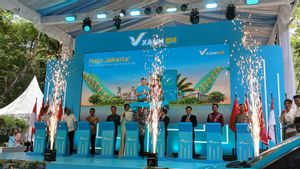JAKARTA - Since opening and being allowed to be used by other manufacturers in 2022, the North American Charging Standard (NACS) or Tesla's charging system has indeed become the target of many manufacturers to accelerate the growth of electric vehicles in the US.
Japanese automotive manufacturer Honda, along with its subsidiary, Acura, have confirmed their plans to adopt this NACS charging system on all their future EV models.
Noriya Kaihara, President and CEO of Honda Motor Co. for America, stated that they would seek to reach an agreement with Tesla to use the NACS system.
"This is quite important. We also have to encourage NACS. Obviously," Kaihara said as quoted by InsideEVs, Saturday, August 19.
However, Honda and Acura have yet to provide certainty about when their EV models will be equipped with the NACS charging inlet. This decision will depend on General Motors (GM), whose platforms are used by Acura and Honda's latest electric models.
"Maybe in 2025 or 2026. For models like ZDX, it depends on GM. If they agree, then ZDX will get NACS," continued Kaihara.
GM itself has confirmed that their EV models will switch from CCS1 system to NACS starting in 2025. Therefore, Honda and Acura's chances of adopting this system are getting bigger.
Nonetheless, some of Acura's newest models, including ZDX, have used the CCS1 system, as used by the Honda Prologue.
SEE ALSO:
If Honda or Acura actually establish partnerships with Tesla to use NACS, then they will join Ford and GM who first confirmed their plans to use NACS, followed by Volvo, Mercedes-Benz, and Nissan who will also provide models compatible with future NACS charging.
Previously, Honda along with other automotive manufacturers, had also agreed to be part of a major partnership with BMW, GM, Hyundai, Kia, Mercedes-Benz, and Stellantis, to provide EV charging infrastructure in North America. In this joint venture, the seven auto giants aim to build an AV charging network that is easily accessible, convenient, and reliable, with plans to provide 30,000 high charging points to make it easier for millions of electric vehicle users.
The English, Chinese, Japanese, Arabic, and French versions are automatically generated by the AI. So there may still be inaccuracies in translating, please always see Indonesian as our main language. (system supported by DigitalSiber.id)
















